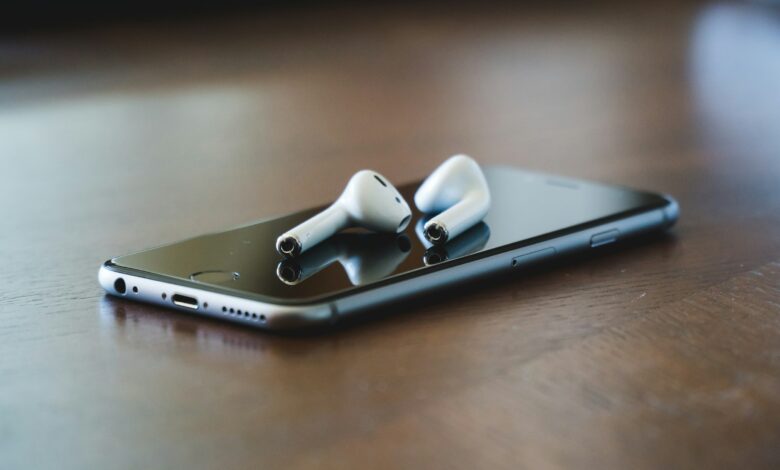Comprehensive Steps to Cancel Your Facetune Subscription

Selecting the right microphone is crucial for capturing high-quality audio recordings. The type of microphone you choose determines how accurately your audio is converted into an electric signal. An inappropriate or low-quality microphone will result in poor sound reproduction with elements like distortion, ambient noise, and limited frequency response.
The microphone you select should be suited for your intended application, whether recording vocals for music, capturing audio for a video production, creating a podcast, or other use cases. The right microphone provides the accurate sonic profile and clarity needed to reproduce the nuances of the sound source.
In addition, a well-chosen microphone aligned with your recording environment and gear setup establishes a solid foundation for producing professional sound. Identifying the specifications you require allows you to zero in on options matching your needs and budget.
Overview of the benefits of using the best microphone for your needs
Selecting the microphone best suited for your particular use case provides multifaceted benefits:
- Enables accurate sound reproduction crucial for professional recordings
- Provides the appropriate frequency response for the desired sound source
- Minimizes ambient noise and distortion
- Aligns with technical requirements of other equipment in signal chain
- Matches sensitivity and output levels to recording gear and environment
- Optimizes directionality and polar pattern for sound source
- Fits budget constraints for home studio or professional use
- Determines upgrade capabilities according to evolving needs
- Defines sound quality expectations for current and future productions
Identifying the right microphone is a foundational choice impacting all aspects of audio production. Carefully evaluating options against intended use, recording type, and technical specifications provides the best match for optimal results.
Understanding Different Types of Microphones
There are several core microphone types, each with unique operating principles, directionality, frequency response, and use case applications:
Exploring dynamic microphones and their characteristics
Dynamic microphones operate by using a diaphragm attached to a moving electromagnetic coil suspended in a magnetic field. Sound waves cause the diaphragm and voice coil to vibrate, generating a small electric current.
- Key attributes include:
- Rugged build quality and durability for stage use
- Lower sensitivity requiring close mic positioning
- Emphasized mid range and controlled bass capture
- Noise rejection for close-miked instruments and voice
- Affordable cost with good value
The robustness and mid-range clarity of dynamics make them ideal for miking loud sound sources like guitar amps, drums, and live vocals.
Understanding the features of condenser microphones
Condenser microphones use an electrically charged thin diaphragm stretched close to a metal disk called the backplate, forming a capacitor. Incoming sound waves cause the diaphragm to vibrate, generating a varying electrical current.
Typical characteristics include:
- Delivers bright, detailed, and accurate reproduction
- Sensitive to capture subtle tones and textures
- Requires external phantom power to operate
- Susceptible to loud transients that can overload circuitry
- More expensive than dynamic equivalents
The sensitivity and transient response make condensers ideal for studio recording of vocals, acoustic instruments, percussion and amplifier miking.
Explaining the unique qualities of ribbon microphones
Ribbon microphones incorporate an ultra-thin corrugated aluminum ribbon suspended between magnets. Sound waves cause the ribbon to vibrate within the magnetic field, inducing an electric current.
Distinguishing ribbon attributes:
- Smooth, natural sound with excellent mid-range detail
- Bi-directional polar pattern picks up front and rear
- Fragile ribbon element requires careful handling
- Strong proximity effect boosts bass tones when close-miked
- Associated with vintage tone sought by recording artists
The special tonal quality makes ribbon microphones desirable for vocals and instruments, played both up-close and further away.
Highlighting the advantages of USB microphones
USB microphones have an integrated analog-to-digital converter allowing direct connection to a computer.
Benefits include:
- Simple plug-and-play setup into any USB port
- No need for additional audio interface equipment
- Compact and portable form factors
- Models available at modest price points
- Limitations in sound quality and recording functionality
The accessibility of USB mics makes them well-suited for podcasting, video calling, voice recognition software, and basic home recordings.
Factors to Consider When Choosing a Microphone
Beyond the operating principle, the intended application determines the technical specifications that most affect microphone selection and performance:
Discussing the significance of frequency response in microphone selection
The frequency response indicates the microphone’s ability to reproduce the full audible range from lowest bass to highest treble tones. The ideal is a flat wide-ranging response covering 20 Hz to 20 kHz. For example, a presence boost around 5-10 kHz aids vocal clarity in a mix. When evaluating options, the shape of the response curve must align with the core tones comprising the sound source to prevent lacking or exaggerated elements.
Explaining the impact of polar pattern on microphone performance
The polar pattern denotes the sensitivity to sound relative to direction and angle of incoming audio. Patterns include:
- Cardioid: Picks up sound from front, less from sides
- Super/hypercardioid: More directional from front, rejects more side/rear sound
- Omnidirectional: Uniform sensitivity from all directions
- Bi-directional: Primarily front and rear pickup
Selecting the pattern best isolating the desired sound source while minimizing bleed from other instruments or room acoustics greatly
impacts recording quality. For example, a cardioid dynamic mic helps reject unwanted sounds for a guitar cab mic setup on stage. Understanding directionality ensures optimal mic positioning.
Understanding the role of sensitivity in microphone suitability
Sensitivity indicates the microphone’s required sound pressure level to produce an adequate output signal. Higher sensitivity ratings allow softer audio sources to be picked up well. Condenser mics have higher sensitivity capturing nuanced tones, whereas dynamics need greater volume like a guitar amp pushing air. Sensitivity combined with polar pickup pattern determines ideal mic distance placement to achieve a balanced signal. Matching sensitivity ratings to the sound pressure levels produced avoids issues like noisy hiss from boosting the gain on insensitive mics or overloading sensitive condensers positioned too closely.
Exploring the importance of maximum sound pressure level in microphone selection
The max SPL indicates the loudest sound level a microphone can handle before distorting or clipping. Condenser mics generally have lower max SPL thresholds around 130-140 dB, while dynamic mics can withstand up to 160 dB for loud guitar amps or drum hits.
Using a mic beyond its max SPL causes the internal components to overload, adding unwanted distortion and harshness. It’s crucial to determine expected peak volumes and choose a microphone rated to comfortably exceed that.
If recording a wide dynamic range, multi-mic setups allow switching between condenser and dynamics to accommodate varying sensitivity and max SPL needs.
Testing and Maintenance of Microphones
Verifying performance through testing and keeping mics properly maintained maximizes their longevity and sound quality over years of use.
Creating the ideal testing environment for your microphone
Testing microphones requires an acoustically treated, quiet room to prevent ambient noise or room modes from skewing results. Position the mic on a stand pointing away from reflective surfaces. Use a pop filter for vocal testing.
Connect the mic to an audio interface input with phantom power enabled if required. Start with neutral EQ settings and minimal compression to capture the unprocessed sound.
The testing setup should remain identical when evaluating multiple mics for accurate sound quality comparisons between options.
Evaluating test audio to ensure optimal microphone performance
Key aspects to evaluate in test recordings include:
- Frequency response: Assess tonal balance and clarity.
- Self-noise: Listen for hiss or humming indicating issues.
- Sensitivity: Check volume levels with soft and loud input signals.
- Plosives: Note if pops cause clipping or distortion.
- Off-axis rejection: Move around the mic to test directionality.
Catching suboptimal performance early prevents problems miking talent in professional sessions. It also confirms when replacement parts like cables or shock mounts could improve audio quality.
Tips for maintaining and preserving the quality of your microphone
Proper microphone maintenance ensures optimal performance and extends its usable lifespan. Useful care tips include:
- Use a windscreen to guard against pops and moisture
- Keep stored in case to prevent dust buildup and damage
- Suspend with shock mount to isolate vibration
- Avoid exposing to extreme heat, cold or humidity
- Check cables, switches and electronics for problems
- Clean with microfiber cloth only when needed
- Demagnetize ribbon mics to preserve ribbon integrity
- Get condensers recalibrated every few years
While rugged dynamic mics withstand more abuse, delicate condensers and ribbons require extra precautions and care for longevity. With proper maintenance, top-quality mics can remain in service for decades.
Maximizing Your Microphone
Employing a few best practices helps optimize microphone capabilities to better capture desired sound sources in any recording environment. Selecting models well-aligned to the sound source characteristics, sensitivity needs, and polar pattern allows mic specifications to work enhancing the desired audio components.
Conclusion
ensures accurate audio reproduction and quality recordings. The wide range of microphone types and technical specifications allows tailoring selection to application needs from studio vocals and instruments to field sound and location capture. Maximizing positioning, accessories, gain staging and maintenance preserves microphone integrity over years of service. With insight into the operating principles, directional patterns, sensitivity, and frequency response of different microphones, recordists can confidently match models to sources. Testing mics in a controlled environment identifies any shortcomings while revealing standout options. Proper placement and gain techniques complete the package fully capturing the nuances of any sound. Keeping mics properly maintained ensures pristine audio takes for the long run.



